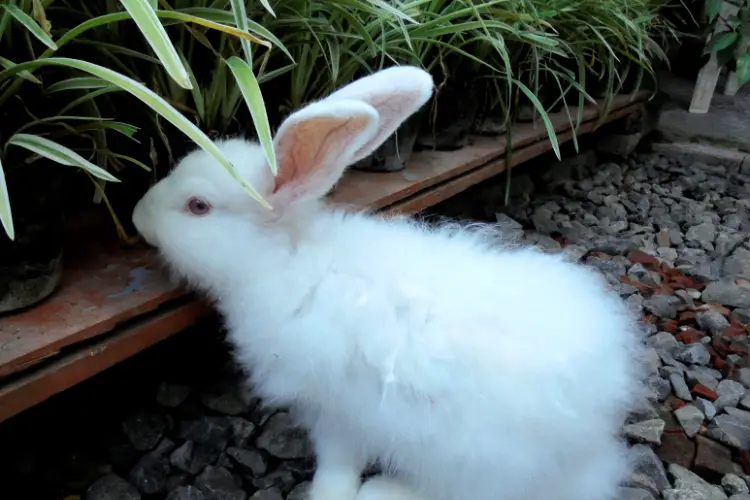Angora rabbits are truly a sight to behold, with their soft, fluffy coats that resemble clouds of cotton candy. These gentle creatures have captured the hearts of many, not just for their adorable appearance but also for the luxurious fiber they produce.
In this blog post guide, we’ll explore about the fascinating world of angora rabbits, exploring their origins, unique characteristics, and the art of angora wool production.
The Origins of Angora Rabbits
The angora rabbit’s journey began in the ancient city of Ankara, Turkey, once known as Angora. It was here that these rabbits were first bred for their highly prized wool, which quickly gained popularity among nobility and royalty.
Over time, their popularity spread across Europe, and selective breeding programs further enhanced the quality and quantity of their fiber.
Breeds of Angora Rabbits
While all angora rabbits share the distinctive trait of producing fine, soft wool, there are several recognized breeds that differ in size, color, and fiber characteristics:
- English Angora: One of the largest angora breeds, the English Angora can weigh up to 12 pounds and produces a dense, thick coat of wool.
- French Angora: Known for their silky, fine wool, French Angoras are smaller in size and come in a variety of colors, including white, fawn, and colored varieties.
- Giant Angora: True to their name, Giant Angoras are the largest breed, weighing up to 16 pounds. Their wool is coarser but highly insulating.
- Satin Angora: With a unique sheen and a sleek, satin-like texture, this breed produces wool that is lightweight yet incredibly soft.
- German Angora: Slightly smaller than the English Angora, the German breed is known for its compact body and dense, woolly coat.
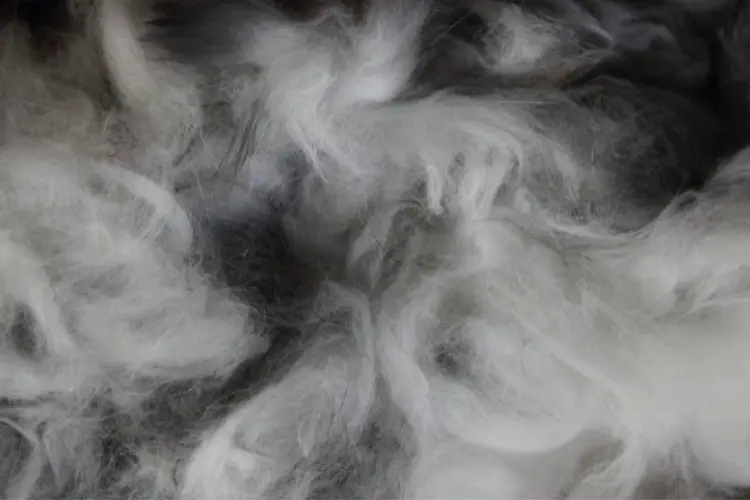
The Magnificent Angora Wool
Angora wool, often referred to as “fiber from the clouds,” is renowned for its exceptional softness, warmth, and lustrous appearance. This precious commodity is harvested through a process called “shearing,” where the rabbit’s coat is carefully trimmed every three to four months.
The unique properties of angora wool make it highly sought after in the textile industry, especially for the production of high-end garments, accessories, and even home furnishings. Here are some key characteristics that set angora wool apart:
- Warmth: Angora wool is an excellent insulator, trapping air between its fibers and providing superior warmth without excessive weight.
- Softness: With a fiber diameter of approximately 12-16 microns (compared to 18-25 microns for sheep’s wool), angora wool has an incredibly soft and delicate texture.
- Lightweight: Despite its warmth and insulating properties, angora wool is remarkably lightweight, making it ideal for layering and year-round wear.
- Hypoallergenic: Unlike other animal fibers, angora wool is considered hypoallergenic, making it a suitable choice for those with allergies or sensitive skin.
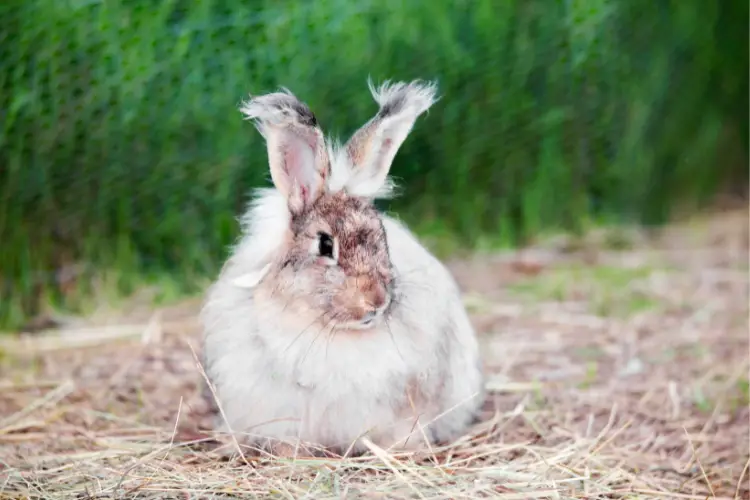
Caring for Angora Rabbits
While angora rabbits are undoubtedly beautiful and produce luxurious wool, they require specialized care and attention. Here are some essential considerations for angora rabbit owners:
- Grooming: Regular grooming is crucial to prevent matting and maintain a healthy coat. This includes daily brushing and occasional trimming to remove loose hair.
- Diet: A high-quality, fiber-rich diet is essential for angora rabbits to maintain their wool production and overall health.
- Housing: Angora rabbits require spacious living quarters with ample space for exercise and a cool, well-ventilated environment to prevent overheating.
- Socialization: Like all rabbits, angoras are social creatures and thrive best when given ample attention and interaction with their owners.
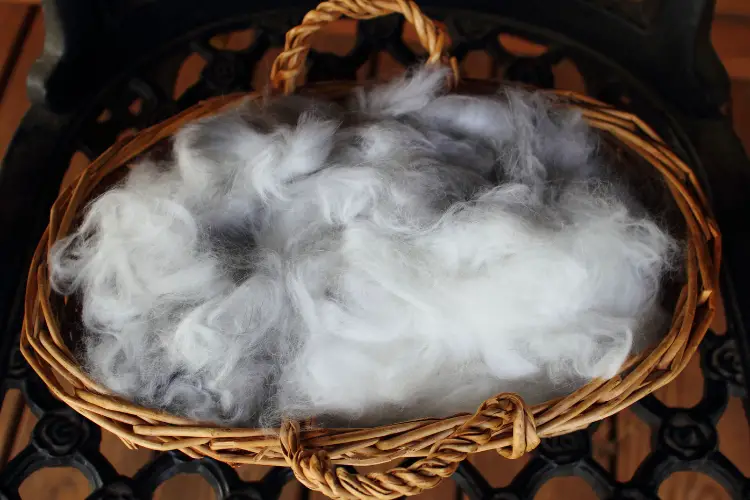
The Art of Angora Wool Production
The process of transforming angora wool into luxurious textiles is a true art form, requiring skill and patience. Here’s a brief overview of the steps involved:
1. Shearing: The first step is to carefully shear the rabbit’s coat, ensuring minimal stress and discomfort to the animal.
2. Sorting and Grading: The harvested wool is sorted and graded based on quality, color, and fineness.
3. Cleaning and Dehairing: The wool undergoes a thorough cleaning process to remove any dirt, debris, or loose guard hairs.
4. Spinning: The cleaned and graded wool is then spun into yarn, either by hand or using specialized machinery.
5. Weaving or Knitting: The angora yarn is woven or knitted into fabrics, garments, or other textile products, often blended with other fibers for added durability and versatility.
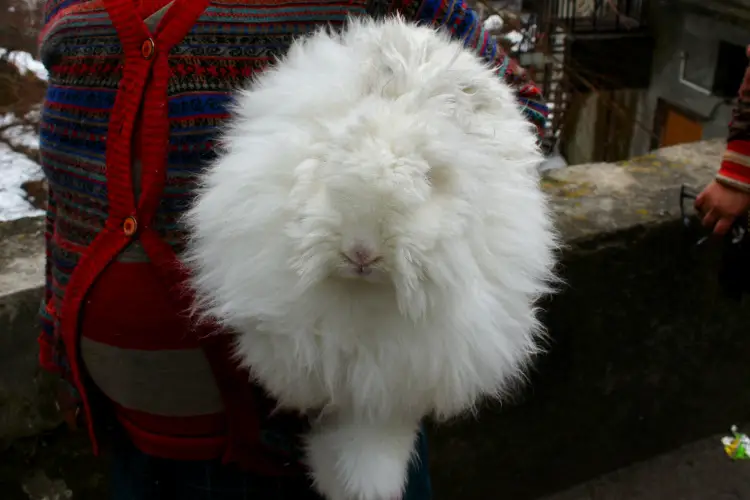
Angora Rabbit Products and Uses
The versatility of angora wool has led to its use in a wide range of products, from fashion to home decor:
- Clothing: Angora wool is highly prized in the fashion industry for its luxurious feel and warmth. It is commonly used in sweaters, scarves, gloves, and other cold-weather accessories.
- Accessories: Angora wool is a popular choice for hats, shawls, and even hand-knitted items like mittens and socks.
- Home Textiles: Angora wool’s softness and insulating properties make it ideal for throw blankets, pillows, and even upholstery fabrics.
- Yarn and Crafting: Angora yarn is a favorite among knitters and fiber artists for its unique texture and warmth.
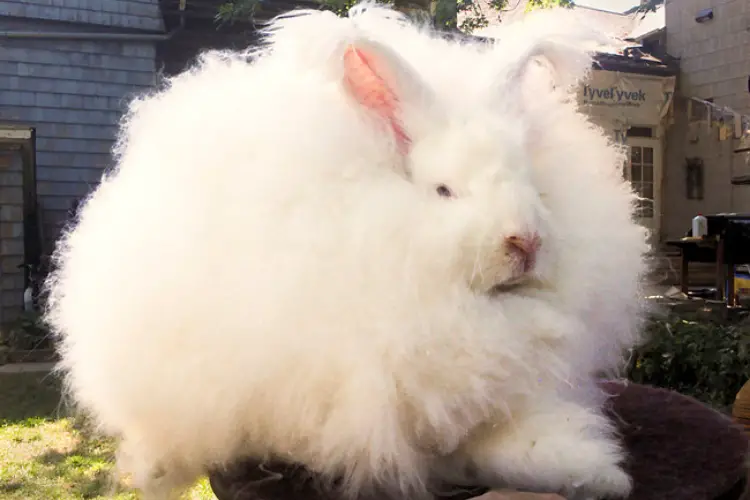
Sustainability and Ethical Considerations
As with any animal-derived product, there are concerns surrounding the ethical treatment of angora rabbits and the sustainability of the industry. Responsible angora wool producers prioritize the following practices:
- Humane Handling: Ensuring the rabbits are treated with care and respect, minimizing stress and discomfort during shearing and handling.
- Sustainable Farming: Implementing environmentally friendly farming methods and promoting responsible breeding practices.
- Traceability: Providing transparency about the sourcing and production of angora wool, allowing consumers to make informed choices.
By supporting ethical and sustainable angora wool producers, consumers can enjoy the luxurious warmth and beauty of this natural fiber while promoting responsible practices.
A Look at the Angora Rabbit Industry
The angora rabbit industry, while niche compared to other textile industries, holds a significant place in the world of luxury fibers. Here’s a glimpse into the global angora rabbit scene:
| Country | Angora Rabbit Population | Notable Production Regions |
|---|---|---|
| China | Estimated 50 million | Inner Mongolia, Sichuan, Hebei |
| France | Approx. 200,000 | Normandy, Brittany |
| Germany | Approx. 100,000 | Bavaria, Saxony |
| United States | Approx. 20,000 | California, Ohio, Pennsylvania |
| Turkey | Approx. 15,000 | Ankara, Bursa, Izmir |
While China dominates the angora rabbit industry, producing an estimated 90% of the world’s angora wool, other countries like France, Germany, and the United States also contribute to the global supply.
Angora Rabbits in Popular Culture
These fluffy creatures have not only captured the hearts of fiber enthusiasts but have also found their way into popular culture:
- Literature: Beatrix Potter’s beloved children’s book character, “The Flopsy Bunnies,” featured angora rabbits as part of the family.
- Film and TV: Angora rabbits have made appearances in various movies and TV shows, often showcasing their soft, cuddly appearance.
- Fashion: High-end fashion designers have long recognized the allure of angora wool, incorporating it into their collections for its luxurious feel and warmth.
- Social Media: Angora rabbits have become internet sensations, with countless adorable videos and images shared across social media platforms.
Conclusion
Angora rabbits are truly remarkable creatures, not only for their adorable appearance but also for the incredible fiber they produce. From their ancient origins in Turkey to their current status as luxury textile producers, these fluffy rabbits have woven their way into the fabric of human culture and industry.
Whether you’re a fiber enthusiast, a fashion connoisseur, or simply someone who appreciates the beauty of nature, angora rabbits and their wool are sure to capture your heart and imagination. By supporting ethical and sustainable practices, we can continue to enjoy the warmth and softness of angora wool while ensuring the well-being of these gentle creatures.

